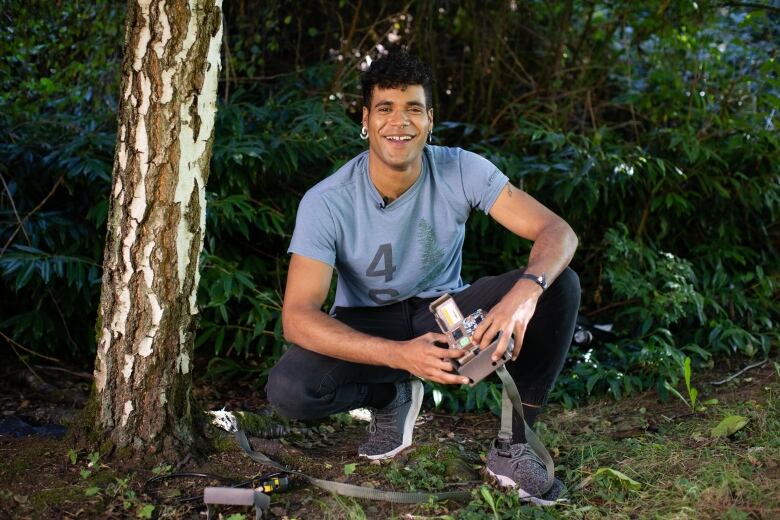Cat count aims to map where felines are most active — and deadly — across Vancouver
“They're kind of like mini lions," says ecologist about urban cats and the danger to birds

Cameras have been set-up across Vancouver this summer to count how many cats are roaming the city and preying on its bird populations.
Cats are responsible for killing between 100 million and 350 million birds a year in Canada and Vancouver has adopted a strategy to address the threat and support biodiversity.
In June, the Stewardship Centre for B.C. launched the Vancouver Cat Count to map domestic and feral cats across the city.
"A lot of pet owners are using the outdoors as a means of enrichment or entertainment to sort of provide a better life for their cats," said Jaylen Bastos, an urban ecologist and the project's lead investigator. "When their cats are outside, they actually are really prolific hunters and so they can have disproportionate impacts on our urban wildlife communities, specifically our bird populations."

He's installed 34 cameras in residential, commercial, industrial and green spaces across the city and has already gathered over two million photographs barely seven weeks into the project.
Most of the cats observed are in residential areas.
"Something I really did not expect, however, was that we seem to be having a high number of cats also in our green spaces and in our parks as well," Bastos said. "This is quite alarming because those are the overlap environments where our native bird populations call home."
The cameras are attached to trees at ground level. When a cat, or other animal, approaches it sets off a motion detector and the camera takes five photographs. After a three-week period, each camera is moved to a new location to monitor wildlife in different areas.

This is the first time Vancouver will have an inventory of its urban animals and will be the largest urban wildlife monitoring project in all of Canada.
So far, Bastos says the cameras have observed at least 40 individual cats, including domestic cats that are let outdoors and feral cats.
He guesses by the end of the twelve-week counting period that he'll have identified at least 100 cats — a number he can use to estimate Vancouver's total urban cat population.
Vancouver Parks Board planner Alan Duncan says data about how many felines prowl the city can help inform policies to protect its 268 bird species including crows, wrens and swallows.
"Part of the bird strategy is to try and encourage people to be more responsible," explained Duncan. "[To encourage] cat and dog owners to try and keep their pets indoors or in what they call 'catios' with outdoor enclosures that keep the birds safe from the cats."
However, the survey won't only help protect birds, says Dr. Elizabeth Gow, a postdoctoral fellow at the University of Guelph in Ontario.

An invasive species
The project's supervisor says cats are considered invasive species in North America and aren't natural predators for many animals in Canada including birds.
"They're kind of like mini lions in that they're still predators, even though they are pets," explained Gow.
"We want to reduce the number of cats that are on the streets because the more cats are out there, we know that if there's high densities … that can influence their health," she said.
Outdoor cats are prone to parasites and infections and they also run the risk of being injured or killed by cars or by larger predators like coyotes, Gow explains.
Bastos hopes his research will change people's views on what it means to be a responsible pet owner. For example, educational workshops could be directed at neighbourhoods with higher densities of roaming cats that also overlap with higher bird populations.